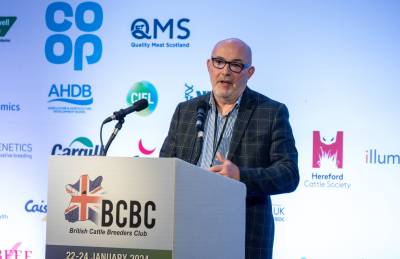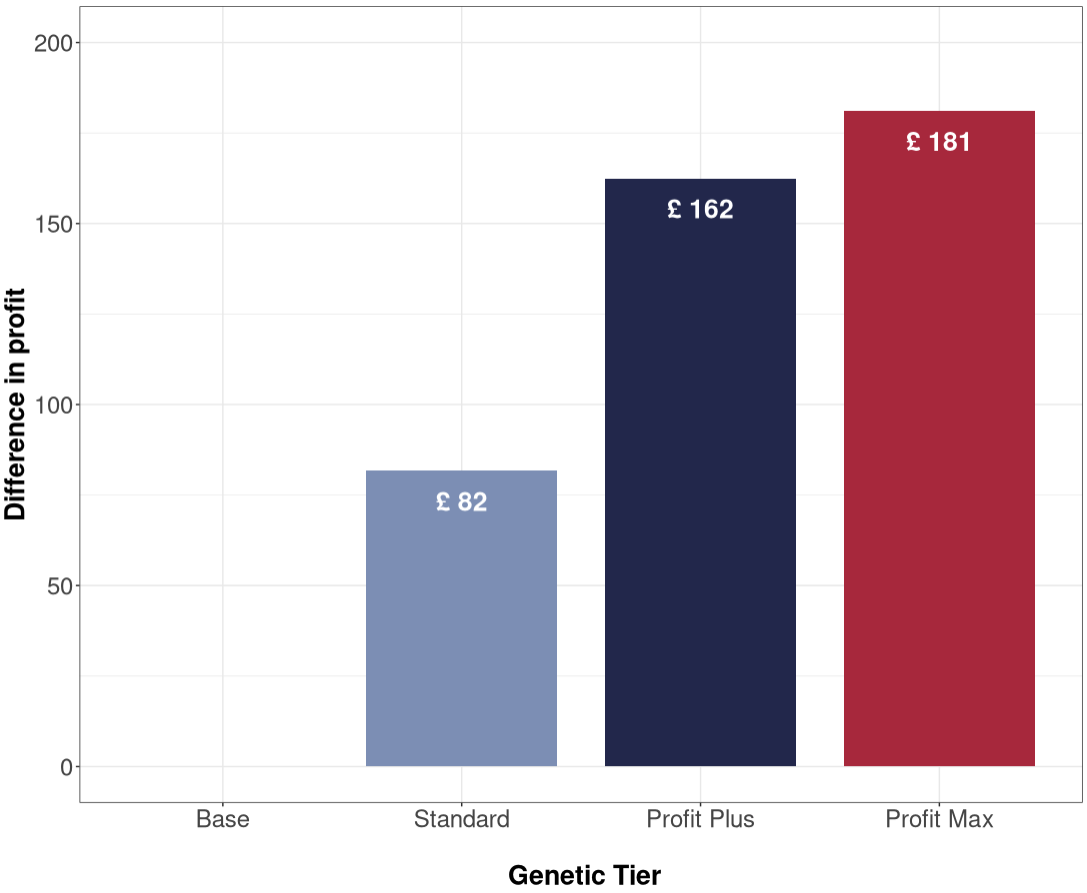
A sustainable food system starts with better genetics . Our work at Genus ABS uses the fundamentals of animal genetic improvement, combined with advancements in reproductive technologies, to provide our customers with continually improving, sustainable genetic solutions , which in turn help nourish the world more sustainably.
With only 30% of dairy calves expected to join the milking herd as replacements each year (AHDB, 2020), the beef supply chain is the destination for most calves being produced from the dairy herd. ABS Sexcel™ and NuEra Beef Genetics™ are the basis for our Winning Game Plan approach to providing beef genetics to dairy farmers around the globe. This programme produces replacement dairy heifers from genetically elite females, who have been identified through genomic testing using X-skewed sexed semen, and the lowest-performing cattle are bred to beef sires selected to add terminal value.
Data from AHDB shows that this game plan has been accepted by UK dairy farmers as there has been a rapid uptake in sexed semen sales as a proportion of dairy straws sold (from 12% to over 76% in the last decade), with beef semen sales having risen to 49% of all sales into the dairy, up from 48% in 2022 . Additionally, the national genetic trends for carcass traits published by AHDB in early 2024 clearly show the impact of the Winning Game Plan strategy on the genetic merit of beef sires used on the dairy herd. The rate of genetic gain for age at slaughter and average daily carcass gain increased soon after the introduction of Sexcel, and the genetic merit of beef sires used in the dairy herd for average daily carcass gain has overtaken that of suckler beef sires.
With so many cows now being bred to beef, it’s never been more important to understand how to select the best beef genetics to allow the calves to perform in a dairy-beef system. These calves need to perform for not only the dairy farmer but also the beef finisher, the processor, and ultimately, the consumer.
At Genus ABS we have spent the last decade delving into this topic and investing in data-driven terminal breeding programmes designed specifically for dairy-beef systems. These breeding programmes – one for our T14 (terminal Angus) line and one for our T15 (terminal British Blue) line – underpin the NuEra Genetics™ program.
Targeting beef genetics to complement the dairy cow requires phenotypic measurement of not only the pedigree population, but also in the crossbred beef on dairy offspring. Only with this data can we develop selection tools (indexes) that match the economic realities of the beef on dairy system. At Genus, we’ve invested heavily in capturing these phenotypes and translating the data into evaluations for both breeds.
To date, feed efficiency data is captured from 5 feed intake units located throughout the UK, and slaughter data is shared from 25 commercial finishing units. This full lifecycle data collection allows us to undertake robust genetic evaluations for both breeds and determine sire genetic merit using our proprietary genetic selection indexes, the NuEra Profit Indexes (NPI). We have over 3,000 feed intake records and 140,000 carcass records flowing into our genetic evaluations.
To allow farmers to choose the terminal genetic level appropriate for their goals, bulls are marketed in tiers based on their merit on NPI ( Profit Max, Profit Plus, Standard and Base, where Profit Max sires produce the most profitable calves) . Validation of progeny performance from sires by tier is completed bi-annually to ensure sires are properly ranked according to the profitability of their progeny in the dairy beef supply chain. The latest validation of T15 genetics showed a £181 difference in the profitability of progeny from Profit Max sires compared to Base sires due to faster growth rates, fewer days to slaughter, more desirable feed efficiency, and heavier carcass weight (Figure 1).

Figure 1. The difference in average progeny profit realised for sires in each genetic tier (Profit Max, Profit Plus, and Standard), in comparison to the Base genetic tier.
Recent internal work also suggests a 17% reduction in methane emissions between Profit Max's progeny and Base sires, and we are currently working with a third party life-cycle assessment (LCA) practitioner to validate the impact of our genetics on emissions. Going into the near and longer-term future, our sights are set on continuing to use the basics of animal breeding and reproductive technology advancement to drive sustainability (which includes profit) for farmers. As well as our LCA work, our current and previous research aims to leverage microbiome-based breeding to create “Climate-smart” genetic solutions for the cattle industry. So far, we have been able to identify over 2,500 microbial genes that impact cattle methane emissions and are currently validating an estimated breeding value for methane emissions based on gene expression data from these microbes in the gut.
We truly believe a sustainable food system starts with better genetics and will continue to pioneer genetics and reproductive technologies to deliver solutions to farmers.
References:
https://ahdb.org.uk/news/survey-reveals-a-significant-increase-in-sexed-dairy-semen
https://ahdb.org.uk/news/genetic-trends-in-beef-sires-used-on-dairy-cows